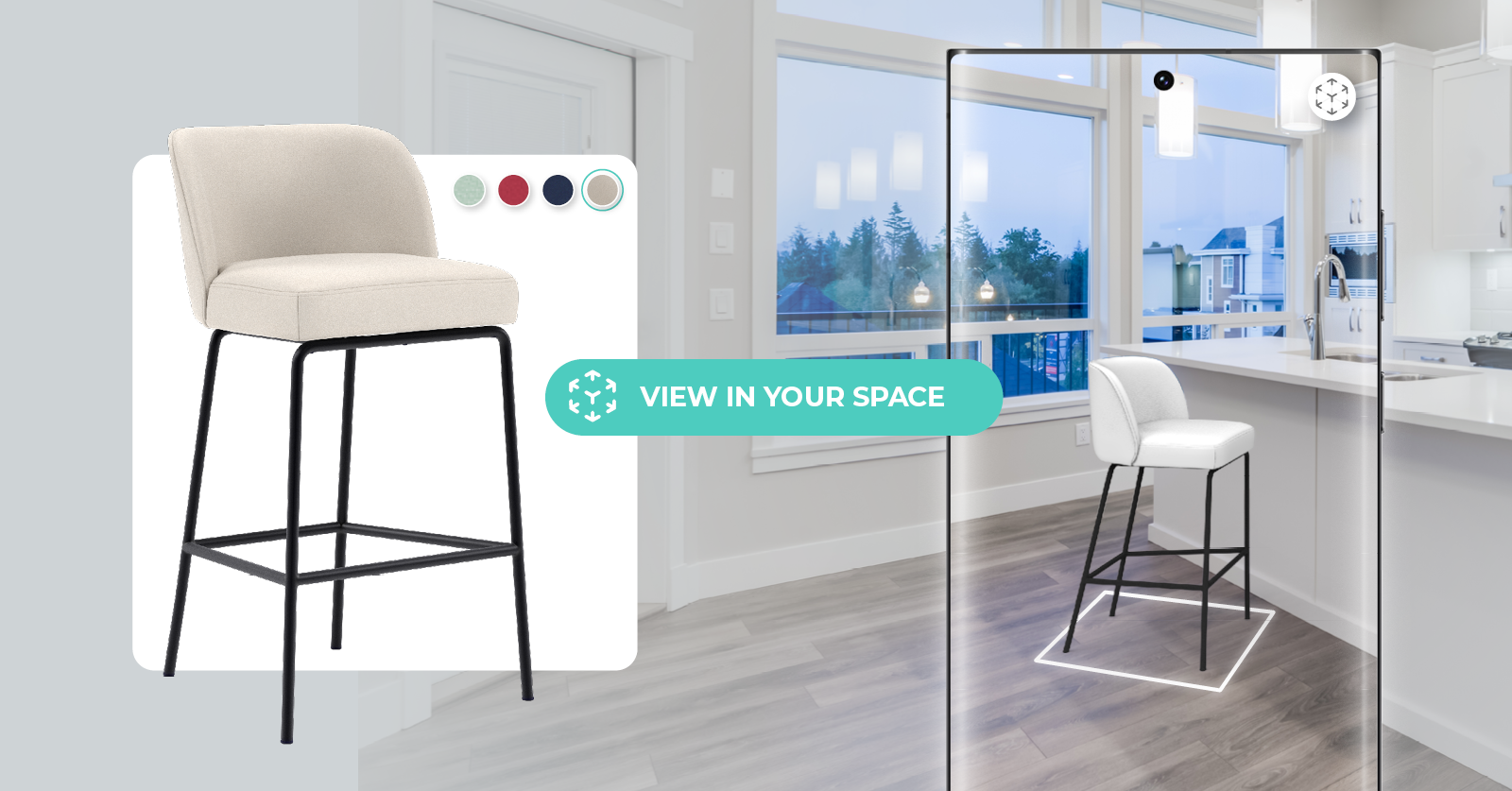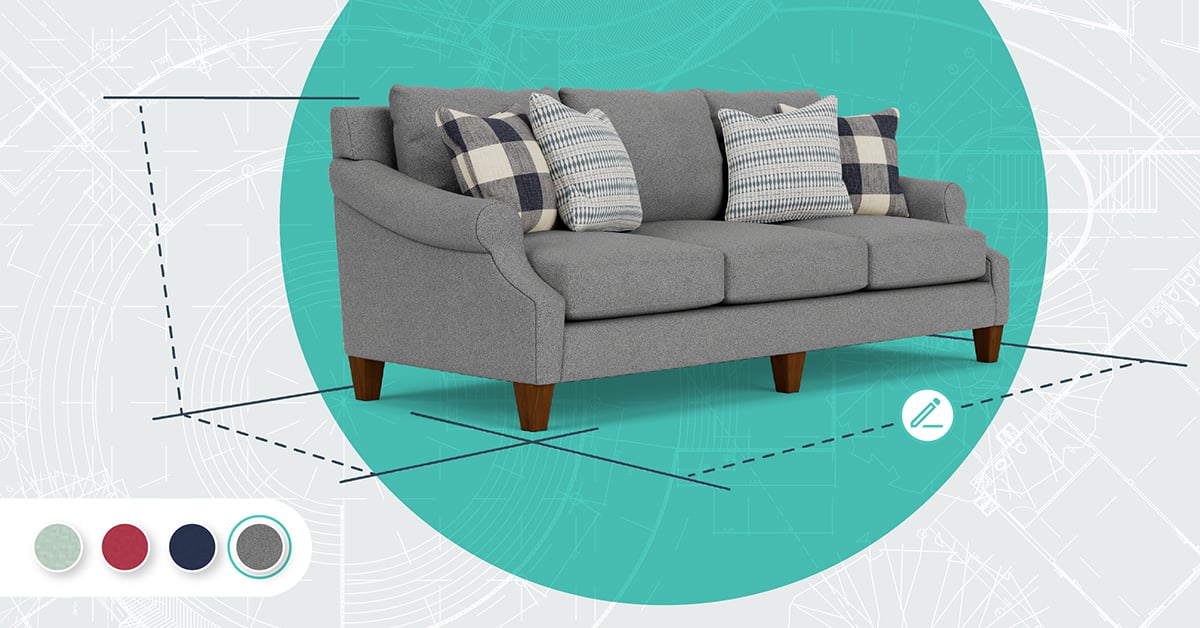Key Points:
-
Smartphones Make AR Essential for Retail: With over 6 billion smartphone users and a majority of web traffic coming from mobile, AR has become accessible and mainstream, especially in retail. 90% of Americans would consider using AR for shopping, making it an inevitable part of the furniture buyer journey due to the visual nature of the products.
-
AR Provides Critical Advantages for Furniture Shoppers: AR fundamentally changes furniture shopping by offering the essential "try before you buy" experience, which is crucial for big-ticket items. It also enables customers to visualize and modify products via customization (color, size, placement) and enhances in-store engagement through mobile tools and QR codes.
-
Web-Native AR Drives Higher Adoption and ROI: While app-based AR exists, web-native AR (no app download required) is the preferred solution for furniture retail. Brands like EQ3 and Interior Define have seen substantial results, including 112% higher conversion rates and double the Average Order Value (AOV) for users engaging with web AR, due to its low friction and instant access.
In the past decade, we've witnessed a myriad of changes in the world of technology that have had a strong impact on every sphere of life. The number of devices owned by the average consumer has exploded.
Today, we can't imagine our lives without our smartphones - phone, alarm clock, music player, social media, all our favorite apps — our life in our pocket.
According to Statista, the number of smartphone users today surpasses six billion and is forecast to grow further by several hundred million in the next few years.
More than 60% of all web traffic comes from mobile devices. According to CNBC, 72% of internet users will access the web solely via smartphones by 2025. With these numbers in mind, it becomes clear that focusing on mobile can be a significant competitive advantage.
However, today when we talk about mobile devices, we are not just talking about responsive web design and mobile apps. Businesses are constantly looking for ways to utilize the power that these devices hold.
AR and smartphones - a match made in heaven
The term augmented reality (AR) was born in the early ‘90s, but that doesn't mean that the idea wasn't around previously. Despite the fact that there were many experiments with AR that started in the late ‘50s, it was more of a scientists' toy until smartphones arrived.
Even though AR and VR first became popular among gamers and young social media users, according to eMarketer, they are slowly becoming mainstream — with AR outpacing VR. Data shows that by 2024, AR user numbers will exceed 100 million.

Advances in technology have made AR experiences more immersive, realistic, and accessible, so it’s no surprise customers are open to adopting AR as part of the buyer journey. Research from Google shows that 90% of Americans currently use or would consider using AR for shopping.
The proliferation of powerful smartphones equipped with augmented reality capabilities will make this technology an inevitable part of the buying process. As reported by AR Insider, it’s estimated that there are 3.1 billion devices with web AR compatibility.
With all this information in perspective, we can definitely say that AR's future is quite exciting. Tech companies are experimenting with other means of introducing augmented reality experiences, but for now, when we talk about AR, businesses are focused on leveraging the potential of smartphones to help them enhance the shopping experience.
What is Augmented Reality?
Augmented reality overlays digitally created content into the real world. So when interacting with virtual content, users are not excluded from normal reality. Augmented reality and virtual reality have different use cases, technologies, and market opportunities in retail.
The main difference between VR and AR is that augmented reality users can see the real world as well as virtual objects. This is opposed to virtual reality, where users enter into a 3D, computer-generated environment that people can explore.
This technology creates an entirely artificial world where people can manipulate objects or perform a series of other actions. For this kind of virtual experience, customers must have special headsets, which are still quite expensive.
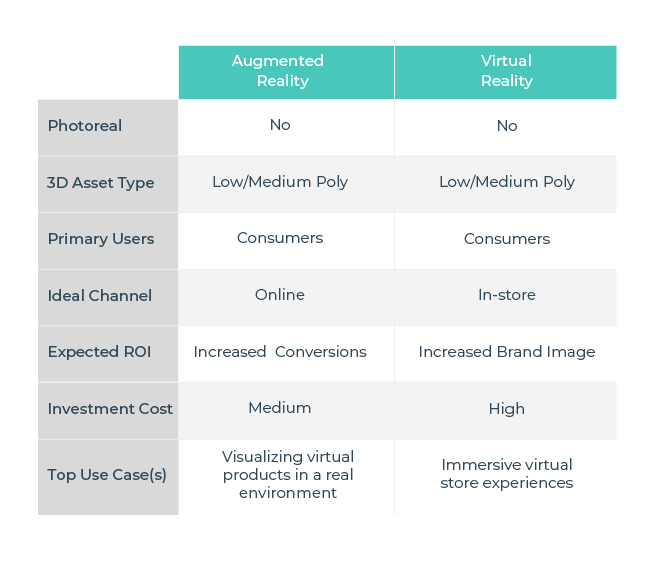
Although the idea of AR has been around for quite some time, the vast majority of people heard about this new reality after the Pokemon Go madness. Luckily, the misconception that people can only use AR in games is now behind us. Today, we see more companies discovering the commercial potential of this technology.
Perkins Coie's report shows that retail is one of the top five industries where respondents have seen significant advancements in incorporating immersive technology. Furniture is even a step ahead. According to eMarketer, furniture is one of the top three most popular categories to explore using the power of augmented reality. In 2022, 34% of U.S. AR users experienced furniture visualization AR content.
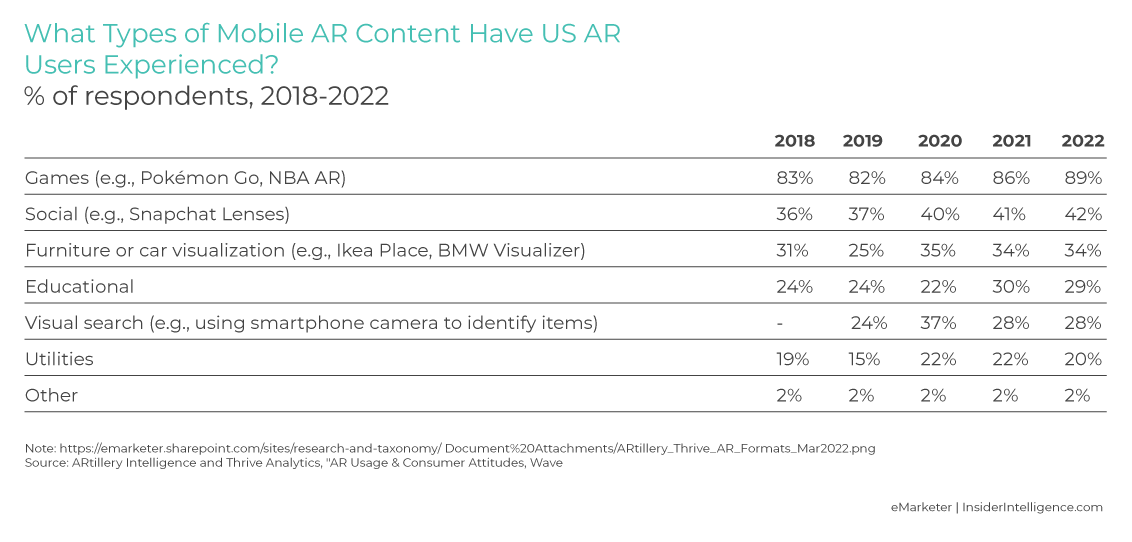
This is no surprise. Furniture is an incredibly visual industry, and customers welcome every effort to bridge the gap between the online and in-store shopping experience. With this in mind, it's clear that AR has significant potential to reinvent the furniture industry and ease the decision-making process.
How can AR change the way we shop for furniture?
The e-commerce boom catalyzed by the pandemic has forced furniture businesses to prioritize engaging online shopping experiences. Some of the biggest furniture players have already introduced AR solutions, allowing customers to insert virtual objects, such as sofas, tables, and chairs, into their homes and immediately see how the piece of furniture would look.
Technology has played the leading role in the retail transformation, and the progress we've seen so far is just a short trailer for what we are about to see in the future.
Here are the three main advantages of using AR in furniture:
- Try before you buy - AR enhances physical objects with digital content, so customers can see how a new sofa would look in their apartment in real time and without any risk that they are paying for something that doesn't fit. The possibility to "try before you buy" is very important, especially for big-ticket items. This way, customers can virtually try out furniture, not worrying about bad decisions, which removes a huge weight from their shoulders before the big purchase.
- Create an immersive furniture shopping experience with Cylindo Augmented Reality - Users can visualize and modify the size, color, and placement of the furniture prior to purchasing. This way, furniture companies can help cut down on the anxiety customers face while shopping for furniture, giving them a plethora of choices to test and allowing them to buy the perfect item with one click. Data shows that 77% of shoppers want to use augmented reality to see product differences, such as a change in color or style.
- In-store engagement - According to Bussiness of Apps, two-thirds of shoppers are now using their mobile devices in-store to make informed decisions. Adding QR codes to your sales collateral in-store allows customers to scan the code and see all available colors and options. And better yet, customers can take the brochure home to scan the QR code and see how a piece of furniture fits in their space. If you’re looking for ways to keep customers engaged even after they leave the store — AR is the perfect solution.
Now the big question: Are we there yet, or is it still too early for AR furniture experiences?
According to Deloitte, furniture is in the sweet spot for augmented shopping capabilities because it has product sets that are highly standardized with high opportunities for customization. As a result, it has a positive ROI and potential for widespread adoption.

Mobile App vs. Web AR
The furniture industry is not as conservative and rigid as we used to think. The tech-savvy direct-to-consumer brands and retailers are continually experimenting with new forms of engagement, both online and in-store, to deliver compelling customer experiences.
Despite all this, user experience and low adoption rates are still the main hurdles that companies need to figure out before AR goes mainstream. When choosing the right technology for your business, the general rule of thumb is that you should focus on technology with tangible ROI and a high adoption rate.
Businesses eager to adopt AR need to choose between web-native AR and mobile applications. But to make a decision, you have to understand the difference and the pros and cons that go with each option.
The difference: App-based AR solutions require users to download your application before they can experience augmented reality. On the other hand, web-native AR allows customers to place 3D models of selected products in the real world without downloading a mobile app.
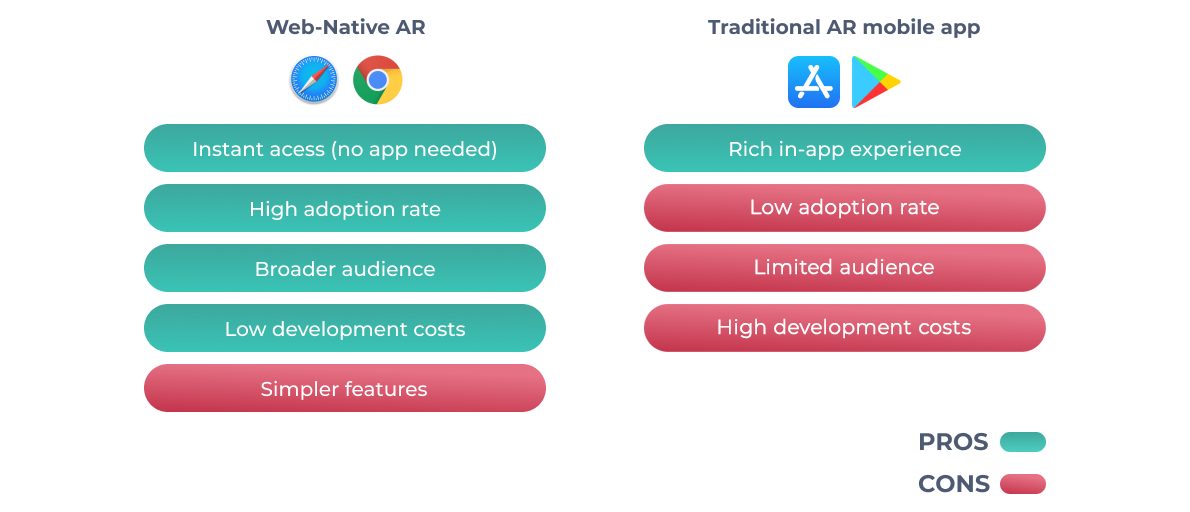
Downloading an app just to visualize a piece of furniture, which is not a frequent purchase, asks for too much effort from the customers’ side, and customers always prefer effortless options. With web-native AR, customers get instant access, and retailers, on the other hand, get a high adoption rate, a broader audience, and low development costs.
Tech-savvy furniture businesses are betting on web AR
The furniture buyer’s journey has evolved. Furniture retailers that want to future-proof their businesses have to prioritize engaging digital experiences. One excellent example of the power of web AR is the implementation of this feature by EQ3.
The Canadian furniture retailer EQ3 wanted to enrich the online shopping experience. To do so, they introduced web-native augmented reality, allowing their customers to examine furniture using AR without a mobile application.
“Augmented reality finds a valuable use case in the furniture industry. These are complex objects that can be difficult for an end consumer to picture in their space. The use of mood boards, renderings, photoshops in design planning all illustrate this challenge. The interplay of different environmental factors can make a significant difference in what is, in the end-consumers eyes, a “good” purchase or a “bad” purchase. We have seen in customer surveys that AR is referenced as a common reason for purchase completion.” - Dan Gange, Director of E-Commerce, EQ3
EQ3 discovered that customers who use augmented reality have a 112% higher conversion rate than those who don't. What's more, AR users have two times higher average order values. To ensure that desktop users are also exposed to augmented reality, the retailer updated its desktop product page with a pop-up QR code that customers can scan to explore AR.
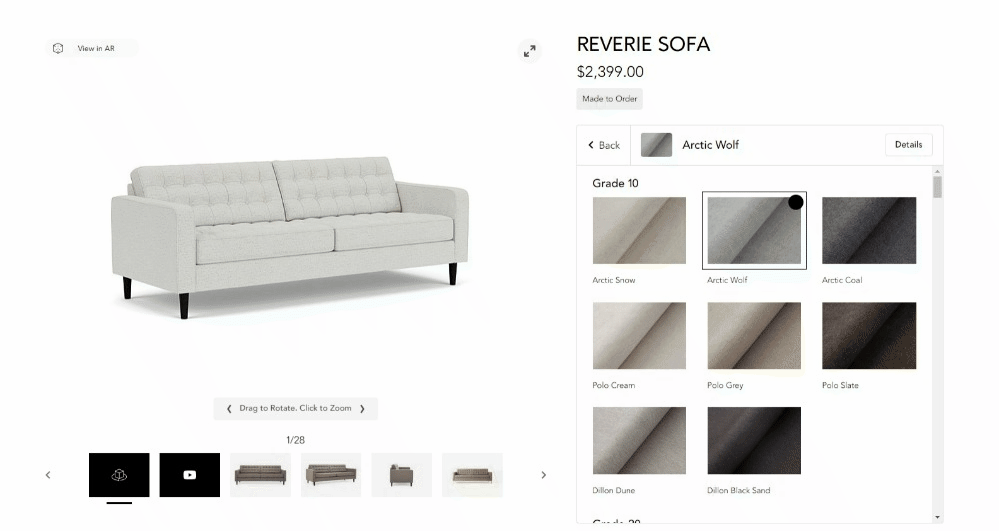
"EQ3 is able to leverage Cylindo’s web-native implementation along with a QR code implementation not just for mobile users but desktop as well. This allows our entire e-commerce customer base access to AR in one or two steps,“ says Dan Gange.
Augmented reality is rapidly becoming the furniture industry standard. As soon as customers experience the convenience of using AR for online shopping, there’s no going back. According to Interior Define, customers that engage with AR are eight times more likely to convert than customers that don't engage with AR.
“We understand that our customers are busy and do a lot of their shopping while on the go. Offering web-native AR means our customers can easily visualize our products without the barrier of leaving our site to go to the App Store and download our mobile app.” - Julie Shulman, VP of Product, Interior Define
Why web AR is table stakes today
Making it easy for customers to use AR with no app needed will positively influence the adoption of augmented reality. Retailers will have the tool they need to complement a visit to the showroom, and customers will have the right amount of information to make more informed decisions.
In the future, as we see increased usage of AR in everyday life, the ability to access AR instantly without the need to install an app will become imperative. Tech-savvy players are getting ready for the new era with AR "on the go."
We can expect more AR-powered content to be prevalent in the coming years, putting furniture businesses that invest in AR at the forefront of the next-generation shopping experience.
Don't wait for VR to go mainstream to leverage the power of 3D
Start optimizing your digital merchandising today. Create an immersive furniture shopping experience with Cylindo Augmented Reality.

